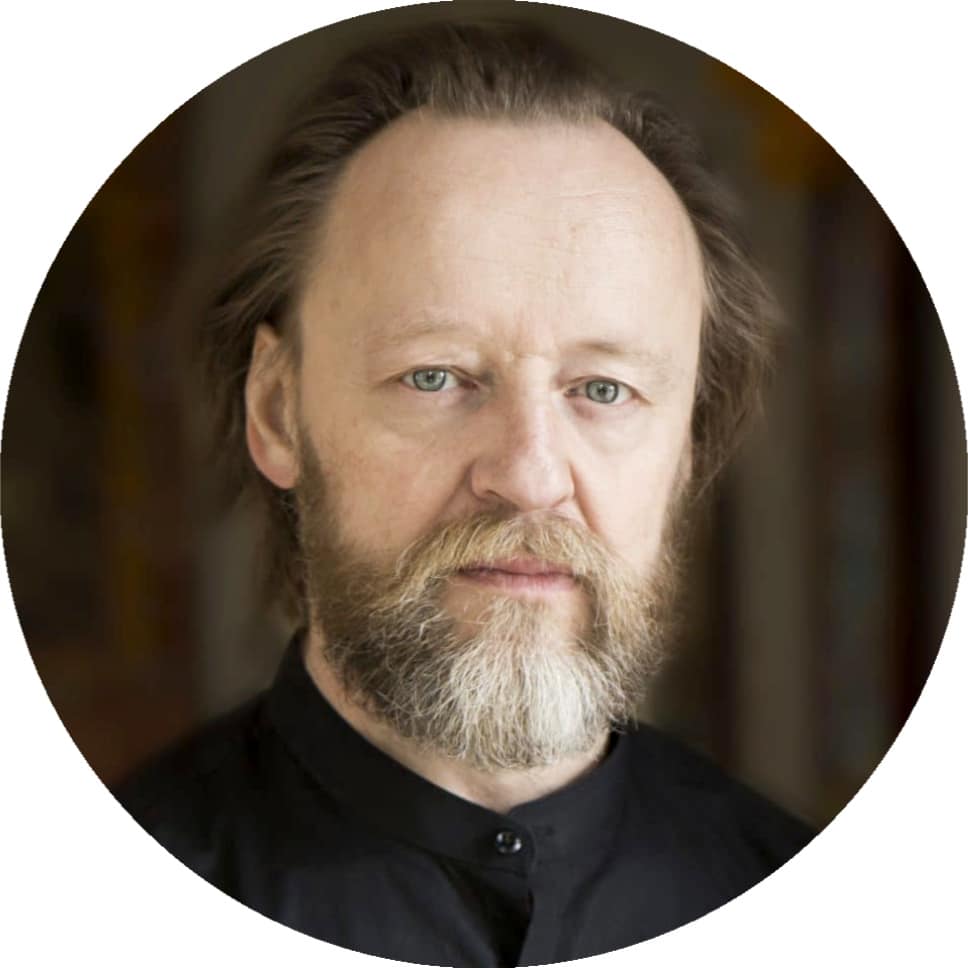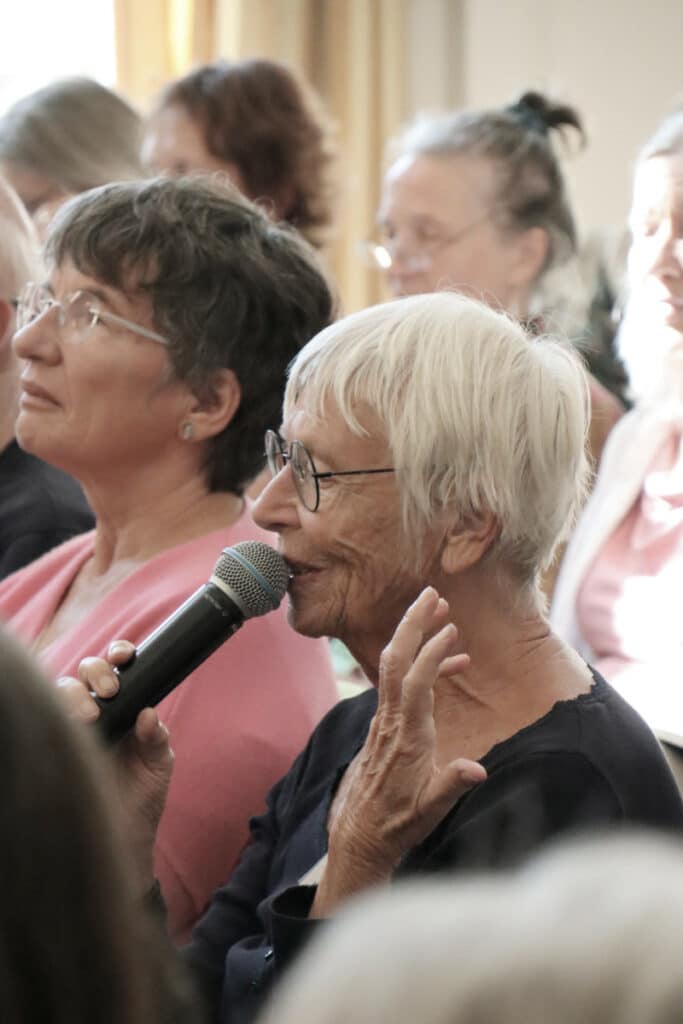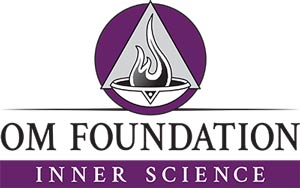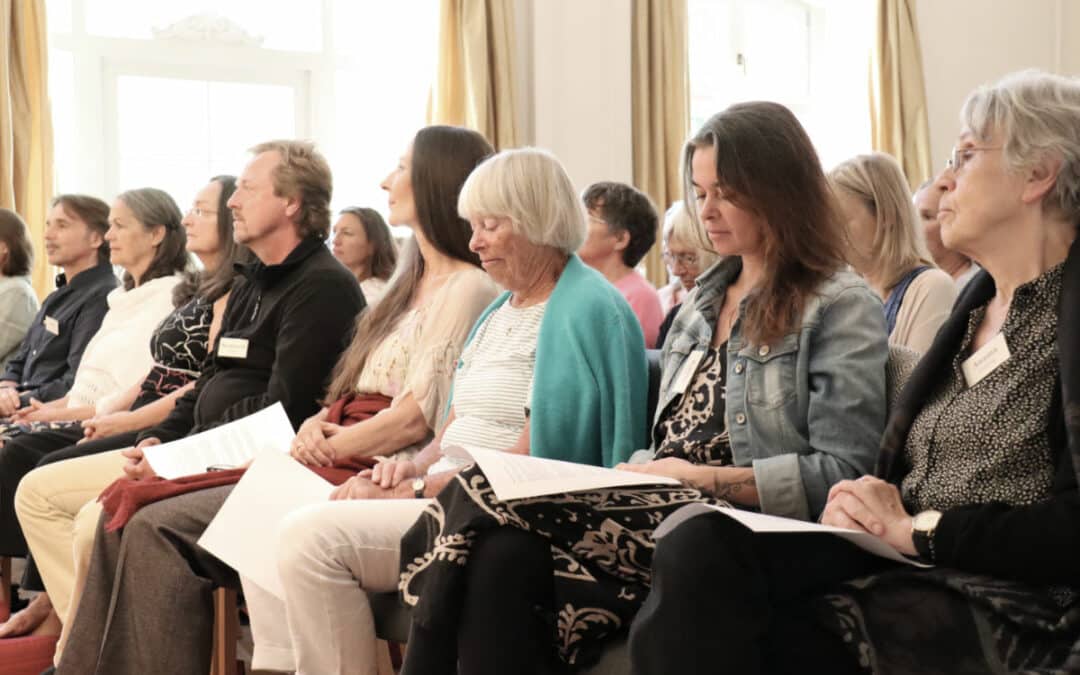Spiritual teachers OM C. Parkin, Regina Sara Ryan and Ryu Künne are the speakers for the Foundation’s upcoming international conference taking place this October at the Gut Saunstorf Monastery: “Living Inner Practice | Zen – Bhakti – Integral Yoga”.
In the following interview, they have each answered for us three questions concerning the inner practice of one who seeks after true knowledge, and provide a glimpse into the practices that they teach and live.

OM C. Parkin
OM is a spiritual master, a mystic, and an author, as well as founder of the OM Foundation Inner Science. His teaching of the Silent Tradition is based on the eastern advaita tradition (teaching of non-duality) and the teachings of Integral Yoga.
1. What significance has the inner practice in a human’s path to awakening? What significance does it have for you?
OM: The inner practice is the life’s task of the inner person, which fully unfolds the sown seed into a majestic tree of life. It describes the activity and passivity of the inner life. The work that is to be taken up, and the work that is to be set aside.
2. Please describe in a few sentences the inner practice that you teach and live.
OM: The inner practice of the Fourth Way teaches the deliverance from any fixation on one of the first three ways, which describe a person’s inner captivity: their bodily, emotional and spiritual bondage. Set free from these unhappy identities, the harmonious internal circulation of these first three ways leads into the unknown Fourth Way. The Fourth Way is synthesis and transcendence. It alone can be described as the pure way of the SELF.
3. What difficulties cropped up on your journey that proved especially persistent? Or, at what points were you or your ego particularly obstinate?
OM: Obstinacy in the ego only exists as long as it has not come face to face with DEATH, and therefore, does not know it. The recognition of death that comes through the question ‘who dies?’ extinguishes the ego’s false existence, and along with it, its obstinacy – once and for all.

Regina Sara Ryan
Regina Sara Ryan is an author and a workshop leader. In 1984 she met her last and most important spiritual teacher, Lee Lozowick, whose teachings are rooted in the Indian Baul tradition. Regina continues to follow what she calls a path of “unashamed devotion”. She lives in Arizona.
1. What significance has the inner practice in a human’s path to awakening? What significance does it have for you?
Everyone has an inner life, whether they call it that or not. We talk to ourselves, involving ourselves with the mind’s contents; we become emotionally exhilarated or depressed, even if we don’t manifest these states outwardly, by what arises within the body/mind. Even when no apparent circumstances are triggering a mood, we find ourselves battling it, or succumbing to it. We have habits of inner considering regarding any current experience of pain or pleasure. We carry on vast amounts of inner dialoguing with others or other ‘I’s’ within ourselves. We plan. We dream. We fantasise. We analyse. We obsess. We worry.
When this inner life is left to its own undisciplined devices it wreaks havoc¾the suffering of illness, emotional turmoil, fragmentation and denial, and fantasy worlds in which to escape what is.
If one wishes to awaken to true nature, or to exercise or live in the love that is the ground of all being, one needs to recognize that there is an inner life, and then observe¾with curiosity, gentle attention and vigilance¾ the states of this life. We need to Know Thyself. In seeing, we allow the inner door to open to us. We see how we are ruled by ego/mind, and how little we listen to the body which is the vessel of the inner life. If we are graced, we are given real teaching¾about what relaxation truly means. This ground of relaxation is the basis of awakening.
For me, this inner work is crucial and constant. My work is prayer and praise and relaxing into the Hand of Divine Love. Unless I cultivate an inner practice, there is no possibility to relax the hold of habit, and to remain unavailable to That which lives me, recognised as silence and Love.
2. Please describe in a few sentences the inner practice that you teach and live.
I am involved in three primary modalities for teaching the essence and value of inner work. These are also the modalities that fill my daily life:
- Zoom groups and intensive weekend programs in self-observation and self-remembrance based in work of RedHawk, supported by Lee’s teaching and that of the Gurdjieff work.
- My own bhakti passion for prayer, mantra, nama, meditation, puja, which I share via my books and by holding the context of prayer with others in need.
- Teaching writing of prose and poetry as a means to articulate and celebrate the inner life.
3. What difficulties cropped up on your journey that proved especially persistent? Or, at what points were you or your ego particularly obstinate?
The paradox, conflict, challenge that has been with me for all my adult life is that of social service (or even seva for others) in forms that are more hands on and tangible, vs. the reality of contemplative prayer. From my earliest years in the convent, I was torn by the witness of the radical activist priest Daniel Berrigan on one hand and the contemplative and mystic writer Thomas Merton on the other. The archetype of Martha/Mary ideally demonstrates this difficulty. Who really has “chosen the better part” (as Jesus supposedly said of Mary) and what is the work of that part in this day and age? Always these questions to be grappled with.
The other ongoing challenge is one of “doing it right” vs. following the intuition of the heart. I have spent many days of retreat being “a good soldier,” while the Beloved finally instructed me to slow down, make no sudden moves and join in lovemaking! This same difficulty manifests as “I do” vs. “Thy will be done unto me.” Very important, and one that I am currently with all the time. I am a very efficient do-er. It is a difficulty to admit that “I can’t do!”
As for being resistant to practice? Always there is the holy resisting force present in any endeavor. While I haven’t always been this way, I notice now that I am highly resistant to any demand to “practice as if your hair is on fire.” Anything that smacks of this masculine, military approach to practice, or any other demands on my time. Every morning, ego is resistant to getting up, to getting on with the schedule. But, in truth, I love the day ahead and love that there is some structure to my times of practice. More and more I am learning that resistance can be befriended.

Ryu Dirk Künne
Ryu is the founder and operator of the Wolkentor ZEN temple in Halle (Saale). As a ZEN master in the line of Rinzai, he practices the particular methodology of ‘Koan-Zen’.
1. What significance has the inner practice in a human’s path to awakening? What significance does it have for you?
Ryu: The inner practice, in the context of Zen, is directly expressed through the body. Therefore, it could be said that inwardness and outwardness together form one unit. The practice of Zen is often limited to sitting quietly (Zazen). That, however, does not constitute Zen practice. Zazen is certainly distinct from all other activities, but from a Zen perspective, it is held to be of equal value. Accordingly, every act and every phenomenon is at once both the way and the goal.
2. Please describe in a few sentences the inner practice that you teach and live.
Ryu: In Rinzai Zen, there are the Zen Koans. One can interpret this method as a practice of ‘internalising’ (Kanna Zen = the contemplation of words). In my school, this device (Upaya), integrated into the ‘sitting in silence’, represents the elementary practical approach to awakening. We can liken a Koan to a broom, sweeping away the bonds of compulsive dualistic thought.
3. What difficulties cropped up on your journey that proved especially persistent? Or, at what points were you or your ego particularly obstinate?
Ryu: A path only makes sense if one also ventures down it! The Zen path begins with the first ‘awakening experiences’ (to see one’s true nature – Japanese: Kensho). This is seen as an initiation into the path – not as the end of the road. The greatest hindrance or misconception encountered on the Zen path is to fancy that one has accomplished something. The path is seen as being bottomless. Regarding this, the Zen master Rinzai says: ‘I am always on the way, and yet always at home.’ In Zen, the first years are not spent in trying to be rid of the ‘I’, but instead, to see ever more clearly through the illusion presented by the thought of “having to be rid of an ‘I’”. Next (after initiation on the path), the task becomes dispensing with this new illusion, that is, of being ‘liberated’ or ‘enlightened’. This, in fact, is seen as a far more substantial aspect of the path, demanding lifelong practice.
Conference: Living Inner Practice | Zen – Bhakti – Integral Yoga
with OM C. Parkin, Regina Sara Ryan, Ryu Künne
20.-22. October 2023
at Gut Saunstorf Monastery
international and bilingual event



